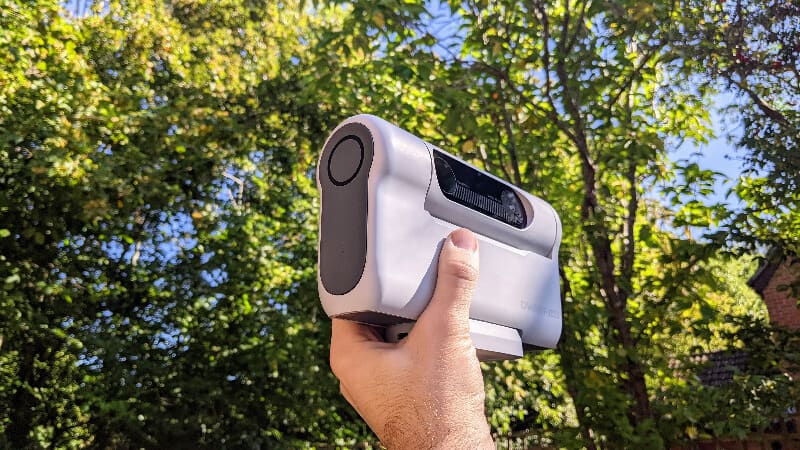Learn everything you need to know about the Dwarf II smart telescope in this hands-on review.
Skies & Scopes Verdict: A Fun Budget Smart Telescope
The DWARF 2 makes deep sky astrophotography ridiculously easy. For the price it’s great value. It is pretty easy to operate and a lot of fun. Just note that you’ll need patience and work to get great images.
Overall Score
4 / 5
Imaging Quality
4 / 5
Ease of Use
3.5 / 5
Portability
5 / 5
Value for Money
4.5 / 10
Versatility
4 / 5
Pros
- Shoot deep space objects in minutes with no experience necessary
- Great value for the price
- Light and portable – easy to store and travel with
Cons
- Relatively low aperture telescope
- Not good for planetary imaging with short focal length
- Slightly fiddly setup and calibration processes
Check Prices:
The DWARF II is a budget smart telescope from the Hong Kong-based company DWARFLAB.
Smart telescopes are different from regular telescopes in that they:
- Have an in-built camera
- Are controlled by smartphone
- Do everything for you in an all-in-one package to take an astrophotography image
They scan the skies, ask you what you want to shoot, and send the processed image straight to your phone.
There are now multiple different smart telescopes on the market. You can see a detailed comparison here of the Best Smart Telescopes. The Dwarf II was the first budget option, with all before costing in the thousands of dollars.
In this review, I share my experience and explore that of other experts and users.
Key points
- The Dwarf II was released in 2023 and was the first budget smart telescope.
- It is very small and packs away perfectly in its carry case to make it very suitable for travel.
- It is extremely light at only 1.2 kg (2.6 lbs).
- It costs around $500 depending on the package you opt for – Classic or Deluxe (these are the same telescope but with different accessories included).
- The setup and operation are not completely effortless like it is with the luxury smart telescopes, and the actual telescope has a fairly small aperture, but it is a fraction of the price of the premium options.
- You can have great success with long-exposure deep sky imaging, and the best results come from post-processing the images yourself with external software rather than just in the Dwarflab app.
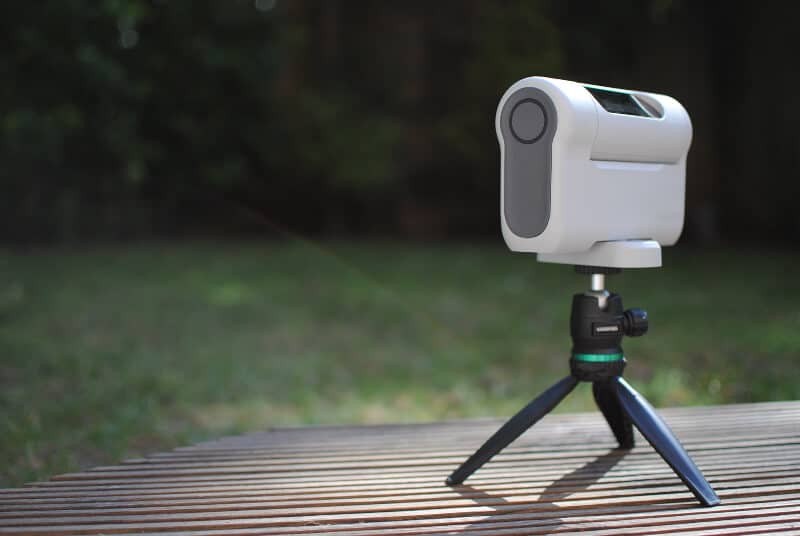
Portability
The first thing I noticed when receiving the telescope package was how light it was.
I put it on some scales packed in the travel case including accessories and it weighed just 1.8 kg (4 lbs):
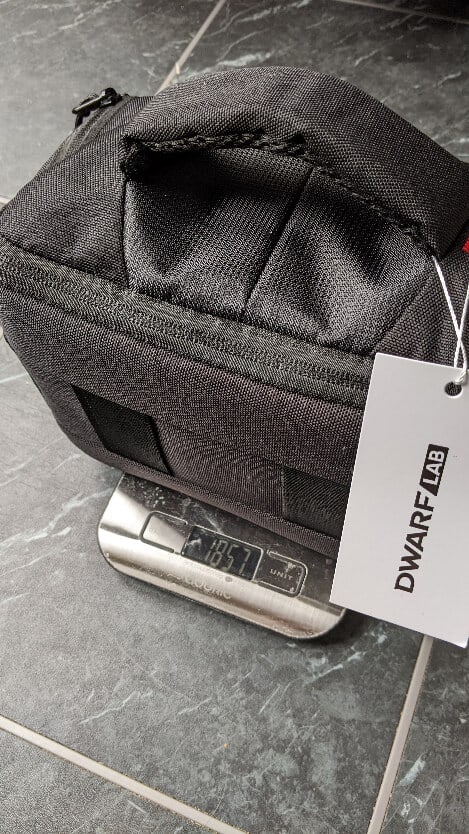
It is ultra-light weight and small, standing at about 30cm tall when standing on the included tripod:
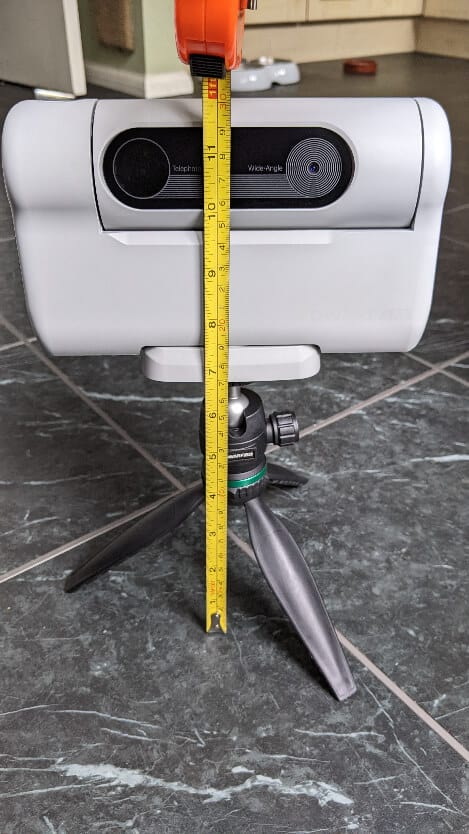
When unboxing you see that it comes in a perfectly sized carry bag that holds it tight. I knew then that it would be perfect for travel with no obstacle to throwing it in your pack to take on trips.
As a bonus, I was unsure if it would need to be plugged into an AC power source, but no, it operates cable free – you just charge the battery with the included cable and take it outside with no need to attach anything.
Ease of Use
To get it up and going you need to:
- Turn it on with the press of a button (it comes pre-charged so you can get going right away)
- Download the dwarflab app from the Android Play Store or iOS App Store, depending on what phone you have
- Connect the app and telescope via wifi or bluetooth – the app takes you through this process
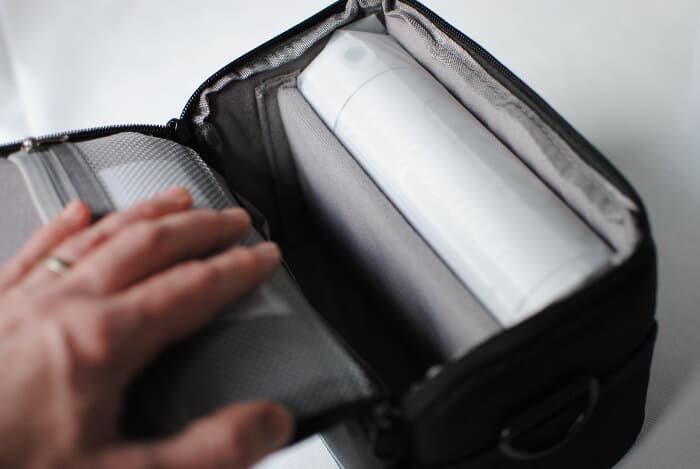
You then may need to update the firmware of the telescope.
I found this easier than anticipated having watched the quick start video on Dwarflab’s YouTube channel, but some less tech-savvy may get a little stuck here and need a little help.
I always think, would my mom be able to do this? and, for this, the answer would be no!
However, you only need to do it once and the instructions were clear and so not a problem if you take your time to follow them or get help from someone more confident with technology.
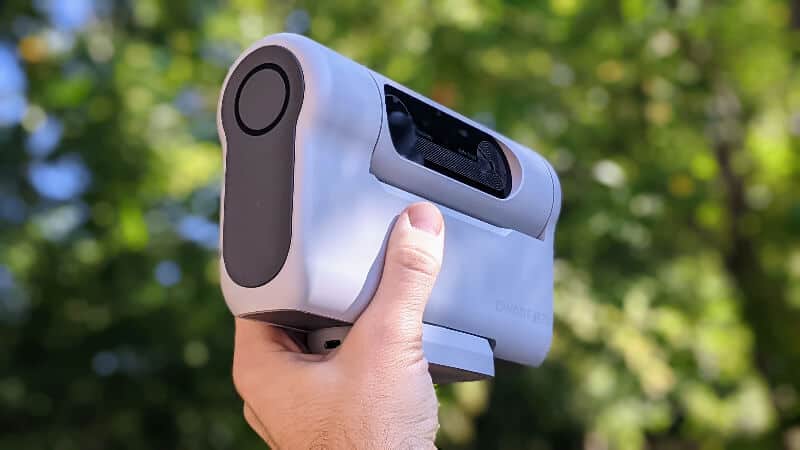
Was it as easy as it could be? No, the app is a little clunky and ideally you just want to turn it on, connect it to your phone and then have it do all the updating automatically itself, but this is a minor quibble and I’m trying to find things that may trip some people up.
Once you have done this you are good to go and start taking pictures with the telescope.
As an astrophotography website, we are going to focus on its capacity for taking photos of astronomical objects in the night sky, but it can be used in the daytime for terrestrial pursuits like bird-watching and nature photography.
Imaging Quality
Now, the big question – how good are the images it produces?
In preparation for using the Dwarf II for astrophotography you have to go through a ten-minute process that may seem a bit strange at first – you have to shut it way in a dark cupboard like it’s been naughty!
What it is doing is taking what are called dark frames, and are necessary for astrophotography.
Once you have done this you can take your telescope outside and go through a calibration process whereby it looks at the sky works out where it is in the world so it can tell you what is above you to view.
This process is mostly automated and guides you through step-by-step.
Once you have done this, it is simply a matter of scrolling through the options of what you want to view, selecting one, and then letting the camera move to the target and track it and gather the light it needs to create the image.
Here are some photos taken with the DWARF II:

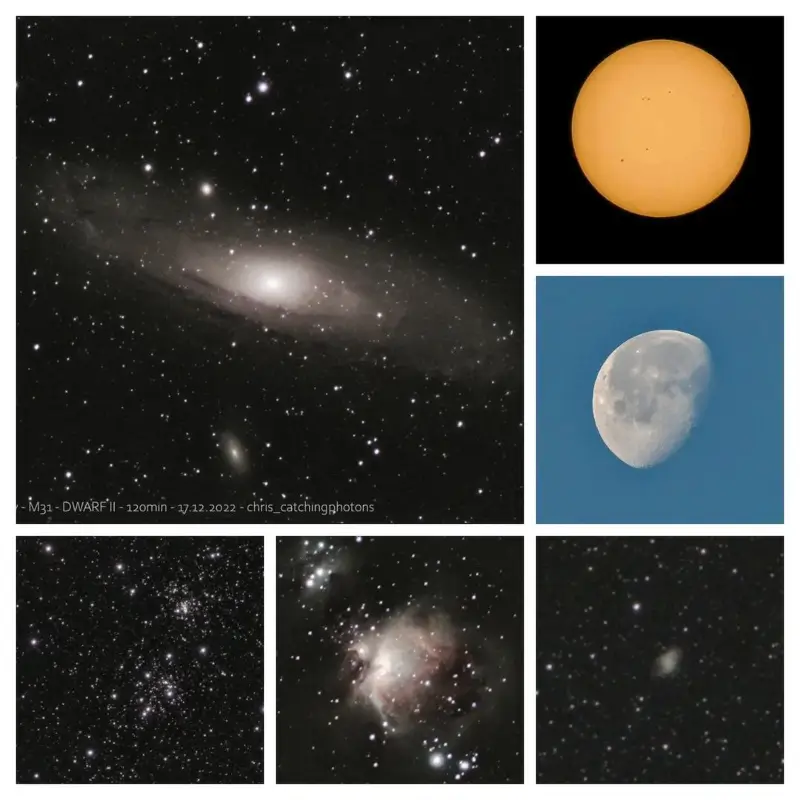
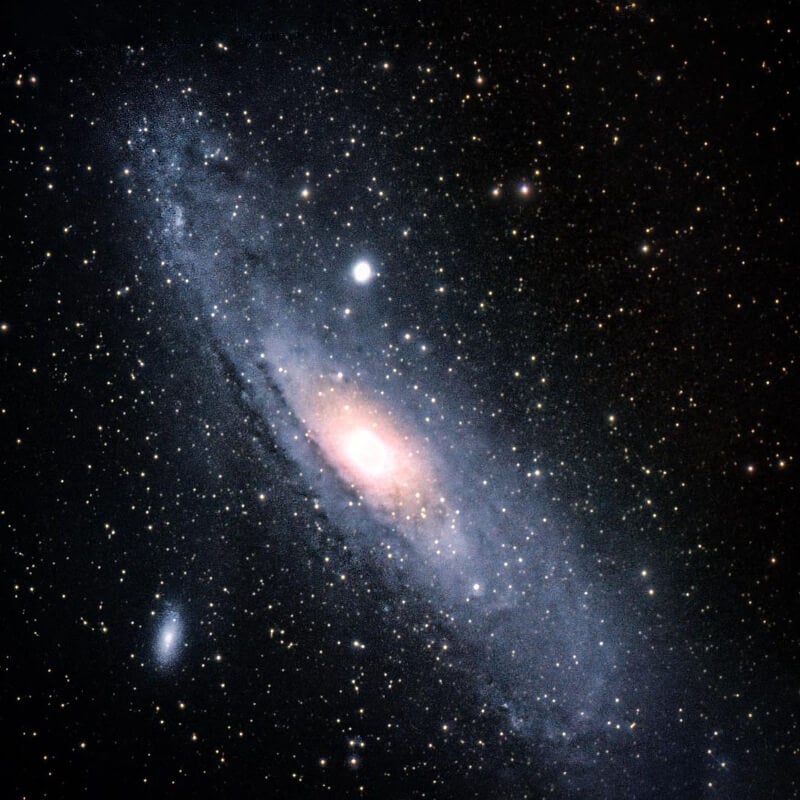
You can also choose to extract the data of the images in RAW files and then process them using separate astrophotography software rather than just editing within the app on your phone.
Cuiv the Lazy Geek has an excellent video that details his exact process for capturing and processing an image of the Orion Nebula with great results.
Value for Money
At the time of writing, the Dwarf II costs:
- $459 for the Classic package
- $595 for the Deluxe package
The only difference is the accessories that come with it, the telescope is the same in both packages. To understand more on this, see our guide to Dwarf 2 Classic vs Deluxe.
Since release there have been sales where the price has dropped so I recommend shopping around.
Check out DWARFLAB for the current price and check other retailers here.
Overall, it is great value for money.
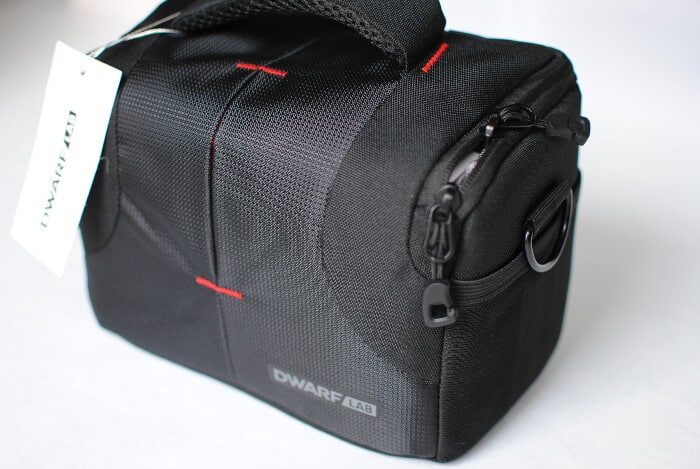
Versatility
The Dwarf 2 is suited for a variety of scenarios, including daytime photography, capturing birds, panoramas, stars, nebulae, and galaxies.
However, it is not ideal for planetary imaging due to its focal length. This limitation slightly affects its versatility score.
In addition, like most smart telescopes, it doesn’t have an eyepiece so that you can look through it for live viewing for astronomical observing.
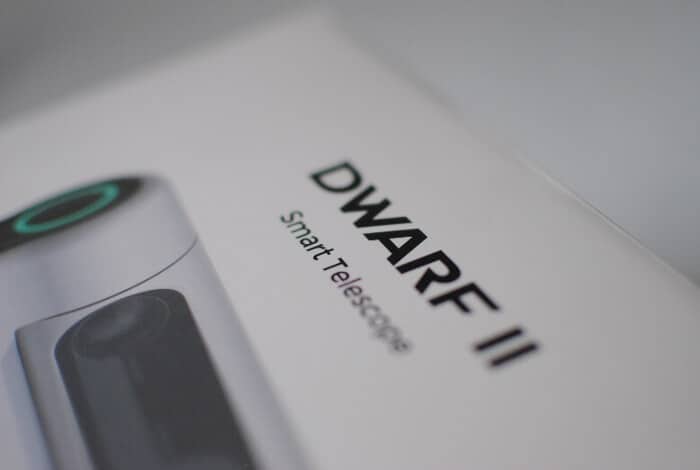
Dwarf II Pros and Cons
Advantages
The pros of the Dwarf II are:
- Unrivaled value: This is a fully automated smart telescope that pretty much anyone could get to grips with and take deep sky astrophotography images and costs less than $500
- Easy of use: Everything you need to do to get it up and running is either self-explanatory or there is a good guide/video from Dwarflab to tell you what to do
- Cheap: Up to now the cheapest smart telescope available was either the Vaonis Vespera or the Unistellar eQuinox, both retailing for around $2550-$3000 (but occasionally available for around $2000). These prices are too high for most people and the price of the Dwarf II makes it so much more accessible for so many more people.
Disadvantages
In terms of the downsides:
- Image quality: As you can see, the photos you get out of the telescopes are good but not amazing. You will not be winning awards for DSO images with a Dwarf II but it would be naive to expect otherwise for this price and size.
- Not good for planetary imaging: The short focal length does not lend itself to planetary photography. Deep sky astrophotography is its specialist field.
- Slightly fiddly processes: The setup and calibration processes are pretty easy to follow but they are not seamless.
You won’t be winning NASA APODs or Astronomy Photographer of the Year with the images, but neither would you with any of the more expensive smart telescopes.
If you are looking for a traditional astronomical observing experience, a regular telescope like a large dobsonian would be best for you.
But for astrophotography, smart telescopes are really disrupting a pursuit that had a relatively high barrier to entry in terms of the money you needed to spend and the amount you had to learn.
Even as a beginner for astronomy though, the process of being able to locate and view images of galaxies like Andromeda quickly and easily is so rewarding, even if you have no intention of sharing or doing anything with the images.
This bypasses one of the common frustrations of people new to telescopes – it takes to long to get the hang of and then what you see is underwhelming.
Dwarf II Alternatives
The main alternative to the DWARF II is the ZWO Seestar S50, which is in a similar price bracket.
See our overview of the Dwarf II vs ZWO Seestar S50 to see how these budget models compare.
You also can read a detailed overview of all the best smart telescopes, which includes comparing the Dwarf 2 to the premium options.
Specifications
- Aperture: 24mm (1-inch)
- Focal length: 100mm (4-inch)
- Focal ratio: F/4.2
- Resolution: 8 megapixels
- Weight: 1.2 kg (2.6 lbs)
The telescope comes with two cameras/lenses – one wide-angle and one telephoto. The telephoto camera is what is used for astrophotography, whilst the wide-angle one is for regular photography.
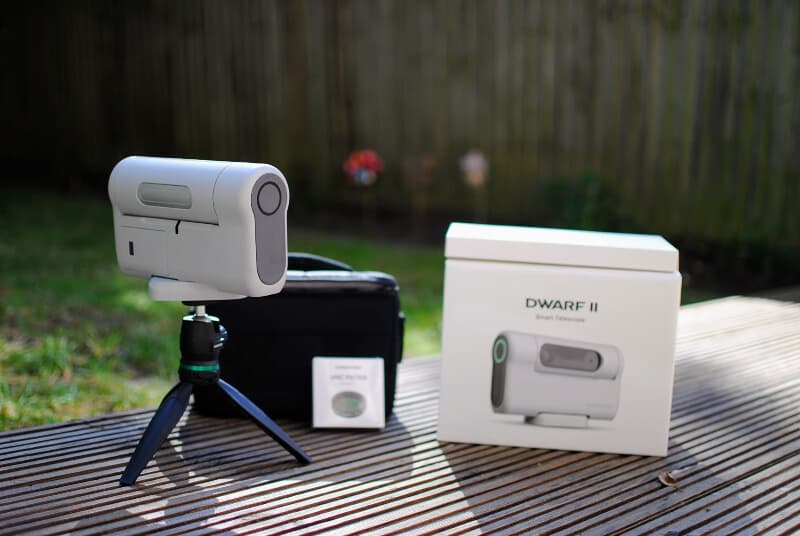
Our Verdict on the Dwarf 2
I got my hands on a Dwarf 2 in 2023 and I found it a lot of fun. It makes deep sky astrophotography ridiculously easy, and is great value for the price.
There are limits to the quality of the images it produces though and you should not have too high expectations for this – it will not compete with advanced astrophotography setups or even premium smart telescopes, but neither will you get either of those for $500.
Overall, the DWARF II is great value and perfect as an introduction to astronomy and astrophotography.
A budget smart telescope like this is a great first step for a beginner to get into astrophotography.
Once you know the limits you may choose to start building a more advanced telescope and mount setup, but you may also choose to just keep having fun with a small and easy scope like this.
Budget Smart Telescope
- Shoot deep space objects in minutes with no expertise or experience necessary
- Great value at a budget price
- Light and portable - easy to store and travel with
- Limited image quality with relatively low aperture
- Not good for planetary imaging with short focal length
- Slightly fiddly setup and calibration processes
Further Information
- Dwarf II Solar Imaging – Is It Any Good for Photographing the Sun?
- Dwarf II Classic vs Deluxe – What’s the Difference Between the two packages?
- Dwarf 2 Accessories – What do the accessories do and what else can you buy?
See also these direct comparisons to other smart telescopes:
- Dwarf 2 vs ZWO Seestar S50
- Dwarf 2 vs Celestron Origin
- Dwarf 2 vs Unistellar eQuinox
- Dwarf 2 vs Unistellar eQuinox 2
- Dwarf 2 vs Unistellar eVscope 2
- Dwarf 2 vs Unistellar Odyssey
- Dwarf 2 vs Unistellar Odyssey Pro
- Dwarf 2 vs Vaonis Vespera
- Dwarf 2 vs Vaonis Vespera 2
- Dwarf 2 vs Vaonis Vespera Pro
- Dwarf 2 vs Vaonis Hestia
How we reviewed the Dwarf 2
I own a Dwarf 2 and so this is a hands-on review based on personal experience.
I also incorporated the reviews of a number of other trusted experts and Skies & Scopes community members to get external opinions:
Galactic Hunter
“It’s size and weight are honestly unbelievable”
“If you are that person who’s looking to get into astrophotography but you’re not yet willing or unable to spend thousands of Euros or dollars on a high-quality telescope, a telescope mount, astro cameras and so on, then you should definitely consider the Dwarf 2 smart telescope.”
“The Dwarf 2 also has a real-time stacking tool in the app so as you are imaging, and as each exposure comes in, it will calibrate, stack, and you can actually see the stacked image in real time.”
“The resulting imaging quality for such a small device is very cool. I like the results, and you can definitely use them to get your feet wet in the field of astronomy.”
“This has so much potential, it needs to be polished… it’s a decent tool for astrophotography in remote places with a tiny telescope.”
Submit Your Review of the Dwarf 2
If you own (or have used) a Dwarf 2, you can submit your review and ratings to us via this form to be incorporated in this review:
Submitted User Reviews
Scott Cooley
“The built in software takes too much of the brightness from nebula.
– Scott Cooley
Also you can download RAW files from the scope to your computer but no more than 250 and it will take several hours to do this. There is an option to upload to Unistellar then they will send you an email when its ready for download. The drawback is it could take a few continuous days to actually get the files uploaded.
This is a point and shoot telescope for people who don’t want to do their own processing to get mid range quality pictures.”
DWARF II Smart Telescope
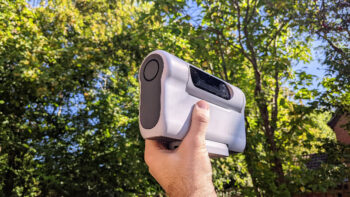
Pros
- Shoot deep space objects in minutes with no expertise or experience necessary
- Great value and currently available for pre-order discount
- Light and portable - easy to store and travel with
Cons
- Limited image quality with relatively low aperture
- Not good for planetary imaging with short focal length
- Slightly fiddly setup and calibration processes


